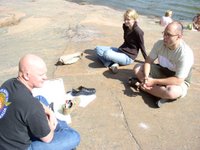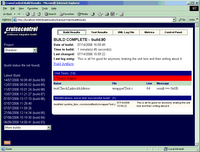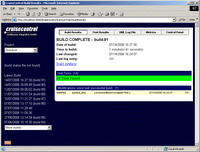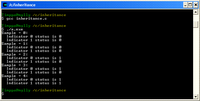- Vague or missing requirements
- New 8-bit microcontroller
- Lots of new sensor technology
- New embedded firmware team of 3+1, including one consultant (in house)
- Some drivers developed by outsourcing
- Final project consisted of 20KLOC of firmware C source (bad meter, but...)
Some findings after initial reflection:
- Weekly delivery (not release) of firmware is possible, at least in some cases.
- Short term goals and daily Scrum meeting effectively work as motivators, and enforce full learning and getting things done done.
- There is not small enough project to not use version control and continuous integration (we had no way to have common version control with outsourced team: large org, IT, you know the drill...)
- HW evolved from microcontroller starter kit to final electronics via several bread board mocks and one halfway PCB prototype. This causes extra assembly work when looked at the surface, but this overhead is by far overcome by enabling the concurrent engineering instead of waiting for final version.
The last point holds only if all the disciplines work as One Team.
We did not have cross-functional team as we did in earlier larger experiment. Schematics, PCB layout and mechanics were developed concurrent, but they were not part of the team - nor did they follow any of so called agile practices. Firmware planning was tried to be synchronized with deliveries from other disciplines. In several occasions these deliveries were delayed, and a common goal needed for a team to actually be a team was somewhat missing. This is where I would like to do things differently if I was to do it all over again.
Occasionally we heard sentences like "If everything goes smoothly we will be ready on Tuesday, but we will be ready at least on Thursday". At this year's Agile Business Conference in London David Taylor (The Naked Leader) said "Don't have a plan B because you will always achieve it." Just guess if the delivery was on Tuesday or Thursday - or Friday?
The whole project was started by extremely vague idea. In few hours we worked out initial backlog and a delivery (release) plan based on simple themes. From that point on plan, design and requirements emerged during the 6 weeks nicely synchronized with weekly demonstration of prototype and new planning session. This experiment supports the belief that good people can work this way, and that we truly live the era of enlightened experimentation. We believe that we could not have performed any better with thorough analysis, design, and specification phases - at least not to cover the cost of them. During the development there were several points where it was not possible to proceed as we had thought. A comprehensive plan based on these initial assumptions would have failed miserably, and the time creating them would have been wasted. In this project the whole team worked out an alternative solution, adjusted the next week's plan, and the project was fine...
I will write an experience report and hopefully make it available here.


























